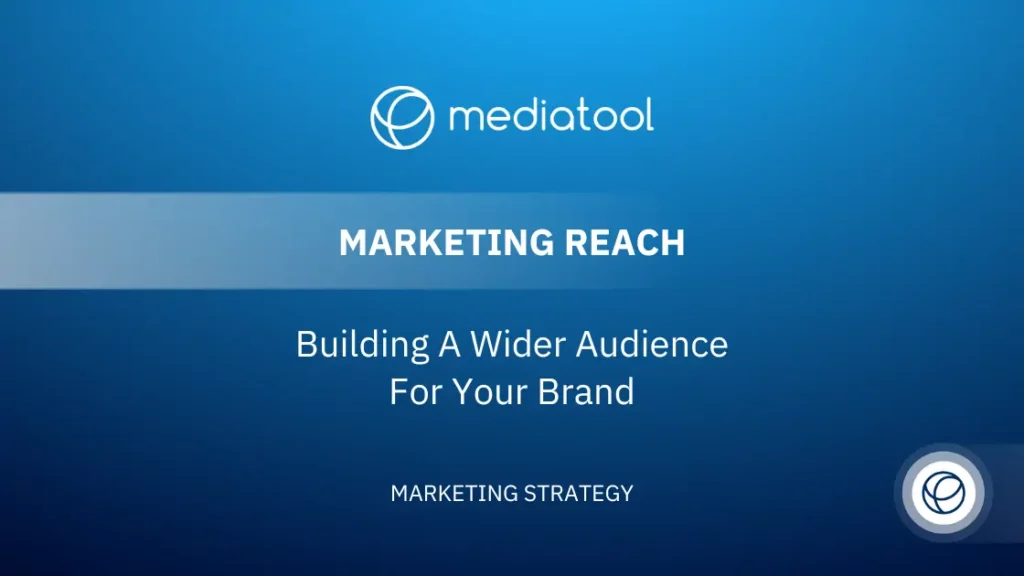Are you struggling to make your mark?
You’re not alone.
In today’s competitive landscape, achieving significant marketing reach can be an uphill battle.
Every brand strives for attention, trying to carve out its niche and connect with potential customers. This saturation often leads to frustration, as your message gets lost in the noise, diminishing its impact and leaving your target audience just beyond your grasp.
But what if there was a way to cut through the clutter and amplify your voice?
Enhancing your marketing reach is the key.
By understanding and implementing targeted strategies, you can extend your brand’s visibility, engage a wider audience, and ultimately transform challenges into opportunities for growth.
Let’s explore how to turn the tide in your favor, making your brand seen, remembered, and preferred.
What is Reach in Marketing?
Reach in marketing measures how many unique viewers see your content. It highlights the diversity in the audience across various platforms, such as ads and social media posts, focusing on the extent of engagement your message receives.
This metric is important for increasing visibility among potential customers, aiming to effectively expand your brand’s exposure.
Understanding reach helps marketers pinpoint how well they connect with their audience. It serves as a foundational step in evaluating the effectiveness of marketing strategies, offering insights into the potential for new customer acquisition.
By tracking reach, businesses can tailor their marketing efforts to better align with their audience’s preferences, enhancing their digital presence’s overall impact.
Why is Marketing Reach Important?

In today’s digital landscape, mastering marketing reach is a game-changer for marketing campaigns. It’s straightforward: the broader your marketing reach, the more potential customers you connect with.
This isn’t about just throwing your message into the wind; it’s about strategically placing your brand on the radar of your intended audience. Doing so can significantly boost your brand awareness and fuel your business growth.
A well-executed social media campaign on popular social media platforms can dramatically enhance your marketing reach. Whether it’s a captivating Facebook ad, an engaging post on your Facebook page, or impactful content shared across social media, the goal is to ensure your message lands in front of the eyes that matter most.
For a social media marketer, this means crafting content that resonates with your audience, ensuring it appears in their news feed or search results, thus maximizing your campaign’s effectiveness.
What is the Difference Between Reach and Impressions?
Diving into the analytics, we encounter two pivotal metrics: reach and impressions. Reach is all about how many unique accounts encounter your content. For instance, if you launch a Facebook ad, the reach measures the exact number of unique viewers who see it, regardless of how many times it pops up in someone’s feed.
Impressions refer to the total number of times your content is displayed. This includes multiple impressions from the same user scrolling past your ad or post multiple times.
Advertisers need to grasp the distinction between the two. While reach gives you an insight into the breadth of your audience, impressions measure how often your content captures attention.
Balancing reach and impressions is key for effective frequency in your advertising campaigns.
Too many impressions on the same user can lead to ad fatigue, diminishing the potential impact of your message. Social media platforms offer tools to calculate reach and track your content’s performance, helping you adjust your strategy for optimal engagement.
How is Reach Calculated in Marketing?

Calculating marketing reach is a fundamental aspect of any digital marketing strategy. Platforms such as Facebook and Google Ads have streamlined the ability for marketers to track how many unique viewers engage with their ads or content.
This metric is critical as it distinguishes between individuals who see a post once and those who encounter the same ad multiple times in their feed. Let’s explore this process in more detail:
Unique Viewer Count
The calculation of reach is focused on tallying unique viewers. This means if someone views a Facebook ad multiple times, they are counted only once. This method allows marketers to accurately gauge the spread of their message, emphasizing the number of people reached rather than the frequency of views.
Insights from Social Media Analytics
Social media analytics are essential for providing insights into the reach of your posts, ads, and campaigns.
These tools offer detailed data, including the total number of impressions a single post generates and the audience demographics reached. Access to this information enables marketers to refine their strategies for enhanced impact.
Impressions and Engagement
Facebook impressions, for example, which track the number of times content appears on a user’s feed, relate closely to reach but fulfill a different objective.
While reach quantifies the audience size, impressions show how often your content is displayed, aiding marketers in gauging engagement levels and content effectiveness.
Considering Additional Factors
Calculating reach also involves other factors, such as how often content is scrolled past without interaction or the performance of a single post during different times of the day.
These elements add complexity to understanding reach but are essential for thoroughly analyzing campaign performance.
The Role of Facebook Reach
Specifically, Facebook reach provides a clear picture of how many unique accounts have viewed your ad or post. Combined with total impressions, these metrics offer insights into user engagement and the potential influence of your content.
For marketers, achieving the right balance between reach and impressions is an ongoing process, vital for the success of their campaigns.
Marketers can better understand audience behavior by analyzing the estimated number of unique viewers, how impressions are divided by content type, and the frequency with which ads are seen but ignored.
This knowledge is key to tailoring strategies that ensure content not only reaches its intended audience but also resonates, driving engagement and achieving campaign objectives.
Strategies to Boost Marketing Reach
Improving your marketing reach is about more than just numbers; it’s about making meaningful connections with potential customers. Here are some targeted strategies, each focusing on a different aspect of reach enhancement.
Optimize for Your Target Audience
Tailoring your content to meet the specific interests and needs of your intended audience is key. By focusing on the particular message that resonates with your potential customers, you increase the likelihood of engagement and conversion.
Understanding your audience’s demographics, interests, and behavior is crucial for creating content that hits the mark. Utilize customer feedback, surveys, and social media interactions to gather insights. This deeper understanding allows for more personalized and effective content that truly speaks to your audience, further boosting engagement rates.
Diversify Across Platforms
Don’t limit your presence to a single platform. Each social media platform attracts different segments of your audience. By diversifying your approach, you tap into new customer bases, extending your marketing reach across the digital landscape.
Exploring various platforms means adapting your content to fit the unique format and audience of each one. What works on Instagram might not resonate on LinkedIn. Tailoring your message to suit the platform not only increases your reach but also enhances the relevance of your content to the audience on each platform, maximizing engagement.
Leverage Social Media Analytics
Social media analytics are invaluable for refining your marketing approach. These tools help you track reach, engagement, and other metrics, providing insights that can inform your strategy and boost visibility.
Regularly reviewing these analytics allows marketers to identify trends, understand what content performs best, and see where there’s room for improvement. This ongoing analysis enables a dynamic approach to content strategy, where adjustments are made in real-time based on actual performance data, ensuring your content always aligns with audience preferences.
Engage in Paid Reach Strategies
Investing in Facebook ads or Google Ads can significantly increase your reach. Paid strategies allow for precise targeting, ensuring your ads appear in the news feed of your potential audience, thus expanding your market reach.
With paid reach strategies, you can also take advantage of advanced targeting options, such as lookalike audiences and retargeting. These methods help you reach individuals who are similar to your existing customers or those who have previously interacted with your brand, making your ads more effective and increasing the likelihood of conversion.
Focus on Creating Shareable Content
Content that resonates has a higher chance of being shared, organically increasing your reach. Aim to produce content that speaks directly to the interests of your audience, encouraging them to spread the word.
Creating shareable content often involves tapping into current trends, emotional triggers, or providing valuable information that the audience finds useful or entertaining. The more your content connects on a personal level with viewers, the more likely they are to share it with their networks, amplifying your reach exponentially.
Optimize for Organic Reach
While paid reach is effective, organic reach has its own set of benefits. High-quality, engaging content can achieve significant visibility in search results and on social media platforms, extending your reach without extra spend.
To enhance organic reach, focus on SEO best practices for your content and engage actively with your audience. Responding to comments, participating in discussions, and encouraging user-generated content can foster a community around your brand. This engagement not only boosts your organic reach but also builds loyalty and trust with your audience.
You can effectively enhance your marketing reach by applying these strategies and closely monitoring all the metrics related to your campaigns.
Tracking reach and adjusting your tactics based on performance data ensures that your marketing campaigns continue to evolve and resonate with your audience.
Whether through a strategic ad, a compelling post on your page, or engaging content across different social media platforms, the goal remains the same: to capture the attention of as many potential customers as possible, making every impression count.
In Conclusion
Marketing reach isn’t just a number; it’s a reflection of your brand’s potential to engage and attract new customers across different platforms. By focusing on expanding your reach, you’re laying the groundwork for a robust marketing strategy that raises awareness and drives conversion and growth.
Remember, every viewer counts. By understanding and applying the principles of marketing reach, you’re setting your campaigns up for success. Keep it smart, keep it focused, and watch your brand’s reach soar. Embrace the evolving digital landscape with agility, leveraging new tools and platforms as they emerge, to ensure your marketing reach continues to grow and adapt with your audience.





